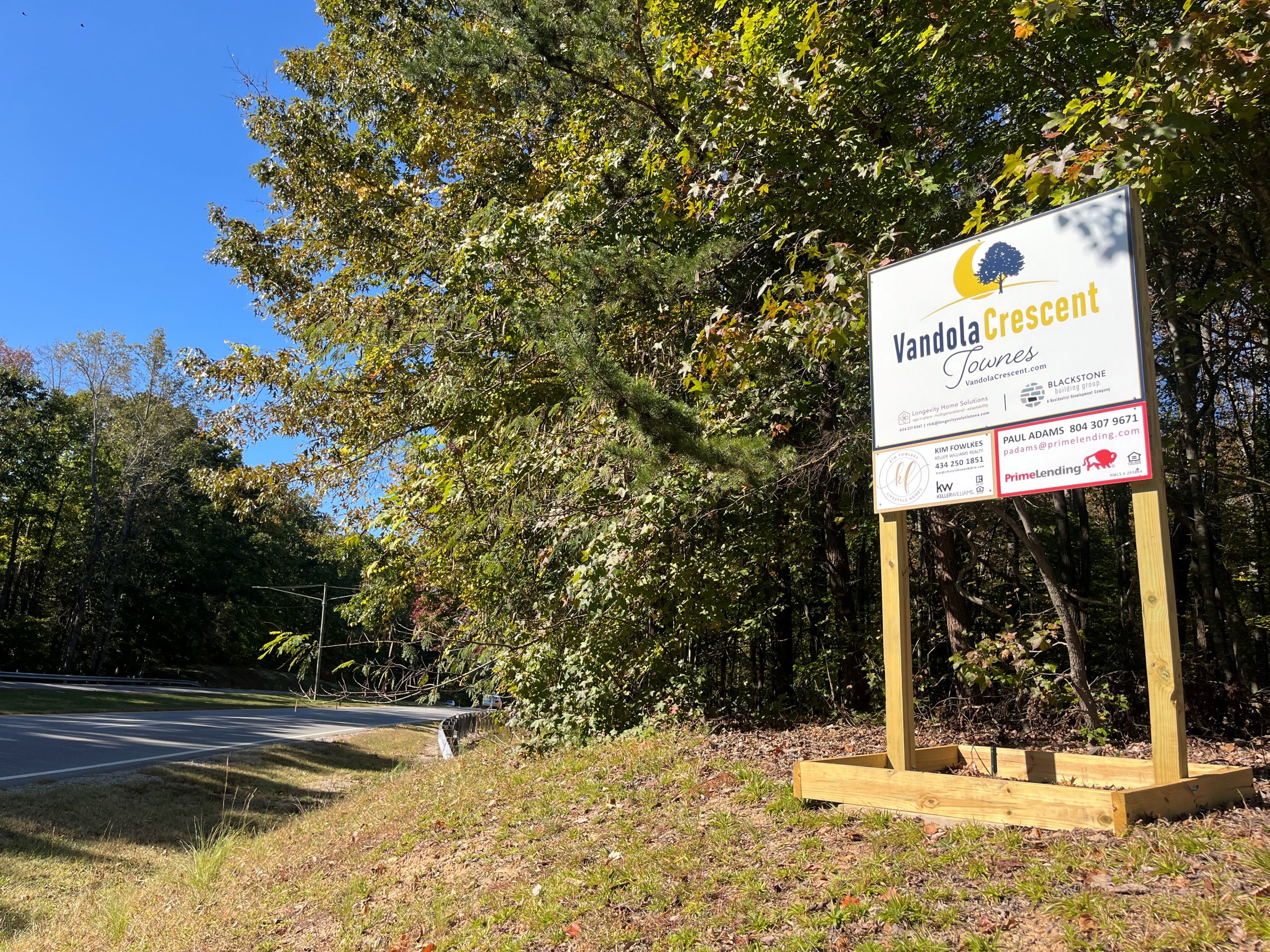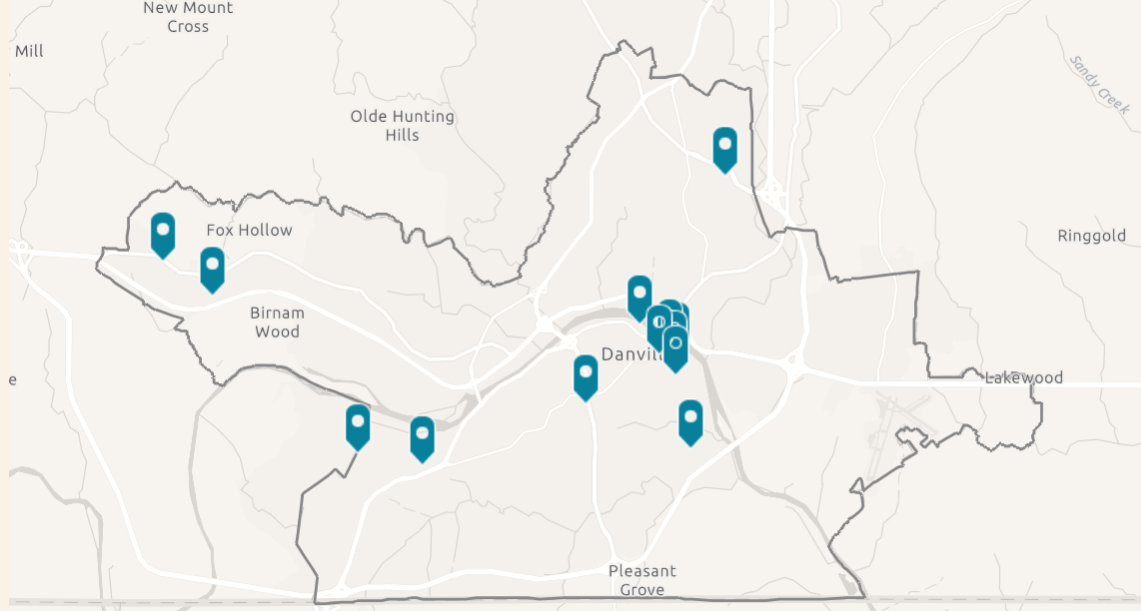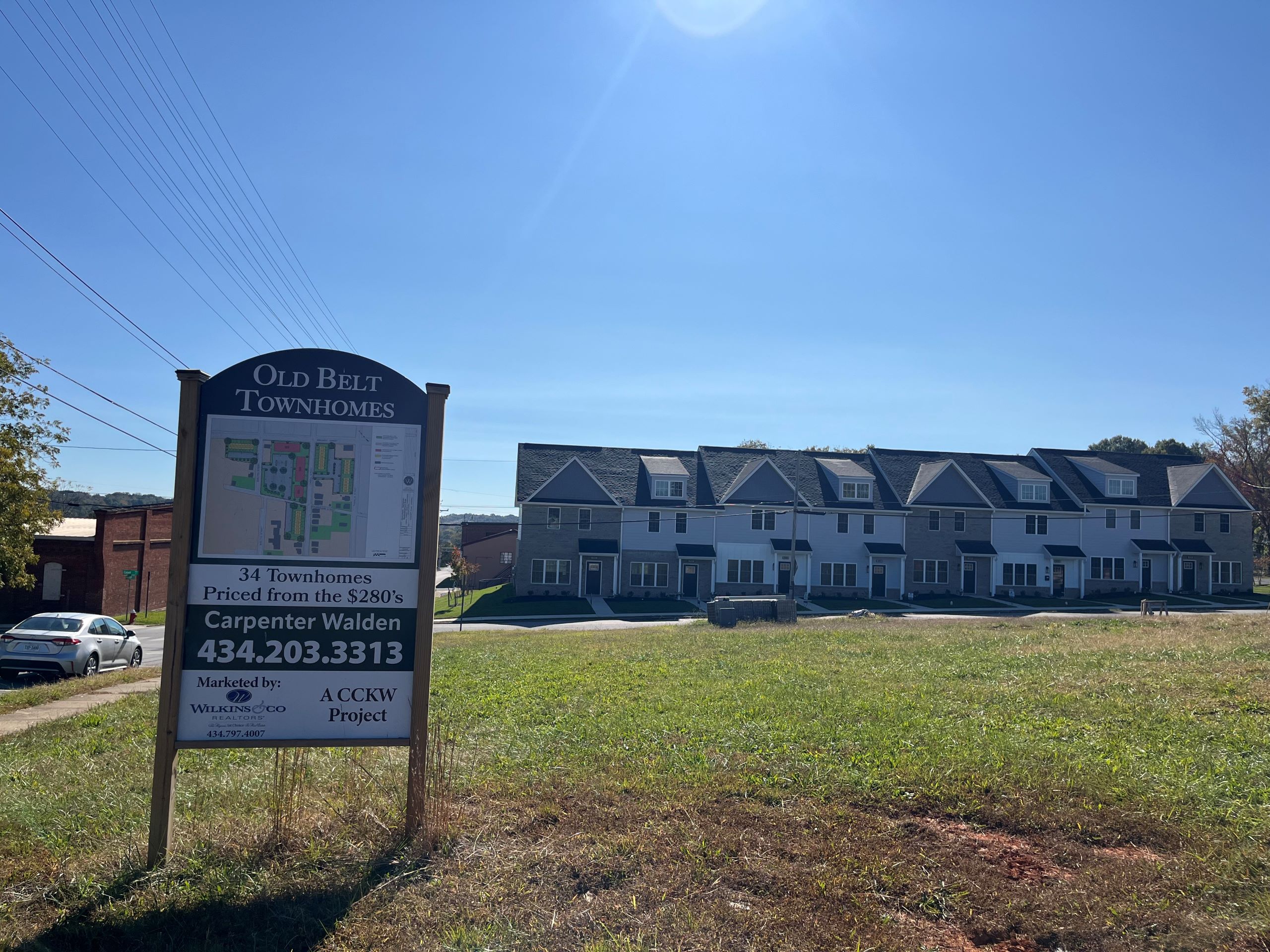Danville has been working for more than two years to address its housing needs, which are only expected to increase as the city continues to grow. Efforts to attract developers and kickstart housing projects have largely been successful so far, but the housing need hasn’t yet been filled.
Danville and surrounding Pittsylvania County are continuing efforts to attract business and industry to the area — including the expected opening next month of Caesars Virginia — but that’s harder to do when there are limited places for employees to live.
The historical model of building business and trusting that housing will come no longer works, said Rick Byers, a Richmond-based developer who is building housing in Danville.
“Housing needs to be part of the economic model,” he said. “It does you no good to open a business that’s going to hire 2,000 to 3,000 people if there’s no place for them to live.”
Another developer building in the city, Brent Cochran, said that lack of housing is often a major hindrance to economic growth.
“If you talk to leaders in the region, they’ll probably say that one of the top three things inhibiting their ability to land some of these outside companies is a lack of housing, and that’s why they’re driving so hard to get it,” he said.
The city is hosting its third annual regional housing summit on Thursday, to bring together developers, builders, contractors, home renovators, bank representatives, architects and community advocates.
The first summit, in 2022, presented the findings of a study that identified the housing shortage in the city. Since then, Danville has been working to aggressively recruit developers and encourage housing projects in the area.
Job creation in the region, which is behind the increase in demand for housing, is a relatively new phenomenon after decades of job losses tied to the declining tobacco and textile industries.
Danville and Pittsylvania are experiencing unprecedented levels of growth, which the housing market wasn’t prepared for.
Danville and Pittsylvania County created almost 4,000 jobs between 2018 and 2022, and the region was projected to see almost 4,000 more by the spring of 2024, according to the housing study.
Those jobs have now been realized, said Susan McCulloch, the city’s director of housing and development.
Released in August 2022, the study laid out Danville’s expected housing need for the following 18 months: 234 new single-family homes and 1,563 new apartment units — on top of a pent-up demand of about 600 single-family homes and over 700 apartment units.
“At this point, we’re past that timeframe,” McCulloch said.
The city’s demand for single-family homes is on track to be met once all of the in-progress projects are completed, she said, though there is still a gap between the supply and demand for apartment units.
“I wish I could say that we have an abundance of housing now, but we still do not,” said James Buckner, a Realtor and Danville City Council member. “We do have an abundance of housing projects happening in the city, which we’re absolutely elated about.”
McCulloch said she is eager to see these projects completed.
“Developers are approaching us, and many of our developers are now looking at two or three projects,” she said. “But the biggest dent in the deficit will be when they’re built.” 
Making Danville attractive to developers
Typically, developers approach a locality about potential projects. Danville had to be more proactive than this because of its urgent need for housing.
The housing study recommended that Danville contact developers about the city’s housing opportunities. Ken Danter, founder and president of real estate consultant The Danter Company, conducted the study.
Danville has been working to aggressively recruit developers for all types of housing projects in the two years since then.
It’s the most activity around housing that Danville has seen in recent memory, said Councilmember Lee Vogler.
“We’ve done more with housing development in the last 12 months than in the previous 12 years,” Vogler said. “That’s only because demand is now through the roof. … For 20-plus years, there was nothing really being built here in Danville, so it’s a drastic change.”
The city had to entice developers to come to an area where there had been no major housing developments built for decades due to the slumping economy — which could’ve been a hard sell.
Developers in other areas of the state had an outdated perception of Danville and other former industry towns, Byers said.
“Unfortunately, Danville and a lot of the cities in the south and southwestern part of the state have had a lingering reputation because of the downturns that have happened through these manufacturing towns over the last 20 or 30 years,” he said.
Byers, who specializes in housing for the aging population with his company Longevity Home Solutions, said he was introduced to Danville through an associate who has been doing work in the city. Before that, he had only passed through.
“I was pleasantly surprised when I got here, and I saw that there were a lot more businesses here than just Caesars coming,” Byers said.
A locality marketing itself like this, and then creating incentives to encourage developers to pursue housing projects, is somewhat uncommon, Cochran said.
“[Danville] said, ‘Here’s the dirt or here’s the building, here’s the incentive package, here’s the study. What more do you need?’ I haven’t seen anyone else do that in our region,” Cochran said.
The city compiled a list of properties that developers might be interested in and began creating incentive packages to spur development.
“I’ve never seen a municipality have a study produced by a credible agency and then couple that, one, with creating incentive packages, and, two, pulling together property lists,” Cochran said. “Honestly, if places want to try to attract development, that’s what they need to do.”
Cochran and his partner, Chris Vail, are behind a multifamily project on West Main Street.
“I really like working in Danville,” he said. “It’s very inviting to work there as a developer. There isn’t a lot of red tape, which you encounter in other places like Roanoke. I would much rather drive 100 miles to do a project [in Danville] than do one in my own backyard, to be perfectly honest.”
Once some initial projects broke the ice, Danville began seeing more interest from developers, McCulloch said.
“These projects that are being built are paving the way, so the risk is getting lower for new developers to come in,” she said. “They’re seeing the examples being set, and they’re hearing about how quickly things are selling.”
The city created an online housing navigator, which has information about the housing needs in Danville as well as a breakdown of ongoing projects, incentives and building permit information.
The incentives for developers include real estate tax grants, infrastructure reimbursements, and real estate tax abatements for historic properties.
“Incentive packages are normal for development, but in my experience, it usually comes from the developer being interested in doing a project sitting down with the city and structuring a performance agreement,” Cochran said. “The nice thing about this is it’s at the front end. If you know what the options are, as a developer, you can go ahead and factor that in instead of guessing about it.”
Danville’s incentives for developers are “pretty aggressive,” he said. “They definitely get my attention as a developer.”
A developer would pay permitting and base taxes, and then can request reimbursements and tax grants from the city when they complete the project, McCulloch said. The city’s Industrial Development Authority would then provide reimbursements and grants for 100% of the tax increase during the first year of the project and 50% of the increase after that.
Incentives continue for 10 years for multifamily developments and 15 years for single-family developments and pass to the next owner if the property is sold.
The city has not yet spent any money on these incentives because none of the housing projects are finished, she said.
The city is also working on launching incentives for renters or homebuyers, including down payment and rental payment assistance grants. Applicants meeting certain requirements could be eligible for up to $5,000 in down payment assistance.
More information about these incentives, as well as eligibility requirements, can be found on the housing navigator website. 
Building homes that residents can afford
The Danter study identified multifamily developments as the greatest housing need in Danville, and that’s where the most construction is happening. Single-family developments have been slower to materialize and harder to attract.
This comes down to project cost, said Cochran, McCulloch and Byers.
“Anymore, it’s really hard to build a single-family house and make it quote-unquote affordable for a lot of the average people to purchase, especially with interest rates being as high as they are right now,” Cochran said.
The study, which came out in August 2022, found that it was almost impossible for a developer to build a home to sell for less than $250,000 in Danville while still making a profit. Since then, that number has gone up to $280,000, McCulloch said.
“At today’s construction costs, that price point will be difficult to deliver without incentives,” the study says.
Byers agreed.
“It’s almost impossible nowadays to develop single-family detached housing affordably,” he said.
Housing affordability is a hot topic in Danville. Byers’ project, the Vandola Crescent housing development, will consist of workforce housing and senior living.
So-called workforce housing provides housing for middle-income workers like teachers, police officers and nurses, or those making between 60% and 120% of an area’s median income. These residents often earn too much to qualify for Housing and Urban Development programs but can’t afford most market-rate apartments.
Many of the other ongoing projects in Danville will create market-rate units — a rate that continues to rise, pricing out segments of the city’s population.
Danville has a population of about 42,000, with a median household income of $38,904 and a median house value of $91,800, according to the housing navigator. The poverty rate is 22.4%.
Many of the new homes under construction fall into what’s considered the entry-level category, with a price of less than $300,000, or the move-up category, between $300,000 and $450,000.
The average home sale price in Danville since 2020 is about $122,000, according to the city’s real estate sales analysis dashboard.
“Our thought is, these will be built, which will free up all different housing types around the city in a ripple effect,” McCulloch said. “It will lift everyone up because there will be more housing throughout the city as people move in and move up and downsize.”
Many of the new projects have a designated percentage of units that are being reserved as workforce housing, McCulloch said.
Of the 60 apartment units planned as part of the Monument Berryman project, 20% will be set aside for residents making between 50% and 80% of the area’s median income.
The T.B. Fitzgerald building, a 22-unit adaptive reuse project in the River District, and Dan River Falls, a redeveloped mill building, are also reserving a portion of their units for workforce housing.
Vandola Crescent will be almost entirely workforce housing — 300 units — paired with what Byers called 60 “active adult,” or 55-and-over, units.
The development of townhomes and patio homes will include a clubhouse and pool on the active adult side and dog parks, covered picnic areas and play areas for children on the workforce side, he said.
“We want to have some amenities, but also maintain affordability, which can be a challenge nowadays,” Byers said. “I think when all is said and done and we’re built out, we’re going to have a really premier community and lifestyle here that Danville hasn’t seen in a long time.”
This style of housing is currently nonexistent for older residents in Danville, who account for a large chunk of the city’s population, Byers said. According to data from the U.S. Census Bureau, about 21% of Danville residents are over the age of 65.
“We have some of the same challenges today in the active-adult market that we have in the first-time homebuyer market, in that they are both rapidly getting priced out,” Byers said.
The city’s housing navigator states that “nearly all the existing rental products on the market are not senior friendly.”
All of the units in the Vandola Crescent development are for purchase, not for rent, Byers said. His company provides financing and education resources to help first-time homebuyers navigate this process, he said.
Other developers have approached the city with the desire to start affordable housing projects, McCulloch said.
“A lot of their requests depend on donated land,” she said, but the city doesn’t own land to donate.
The Danville Redevelopment and Housing Authority does own land, McCulloch said, but those parcels likely wouldn’t meet the minimum acreage requirement that these developers are looking for.
“They usually want a 2-acre tract, and it’s hard to find that,” she said. 
Looking to the future
One focus of the 2023 summit was the importance of treating housing as a major pillar of economic development.
This year’s housing summit will aim to spark new residential housing not only in Danville but in Halifax, Henry, Patrick and Pittsylvania counties and Martinsville.
Developers, builders, contractors, home renovators, financial institution representatives, architects and community advocates are invited.
The summit will include presentations on local and state financial resources, regional development opportunities and success stories of housing growth across the region, according to a release from the city.
Byers and Cochran are both pursuing future housing developments in Danville after their current projects are completed, they said.
“We have several residential projects that are at various stages of the development process,” Cochran said. “Some will be opening next year, and we’ve got a couple more that will be opening over the next couple of years.”
Byers would love to work on a larger destination retirement community in Danville, he said.
He said that the aging population in Danville, like in many other places, are often living in 1950s, ’60s or ’70s-era homes that could sell for a lot of money — but there’s no lateral or downward move available for these residents.
“I hope to create something that has some different levels of affordability, maybe some condominiums, maybe some patio homes, maybe some detached homes, so that those on a fixed income can own a home,” Byers said. “I really think the Danville area is perfectly placed for something like that.”



